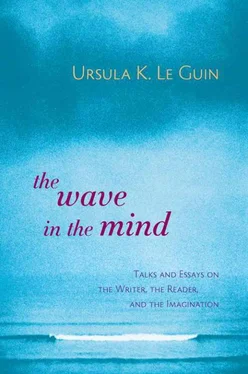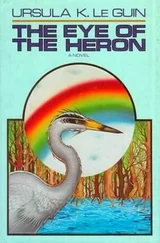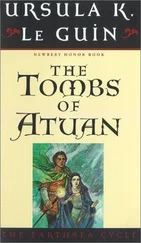Above the level of the merely commercial, in the realm of art, whether it’s called mainstream or genre fiction, we can fulfill our expectations only by learning which authors disappoint and which authors offer the true nourishment for the soul. We find out who the good writers are, and then we look or wait for their next book. Such writers—living or dead, whatever genre they write in, critically fashionable or not, academically approved or not—are those who not only meet our expectations but surpass them. That is the gift the great storytellers have. They tell the same stories over and over (how many stories are there?), but when they tell them they are new, they are news, they renew us, they show us the world made new.
It does not matter, on this level, whether the story is told and heard, or written and read.
But if it is written and read in silence by the reader, there is some awareness in many of us that a dimension of the experience of story has been lost: the aural dimension, the whole aspect of the telling of the story and the hearing of it in a certain time and space, by a certain person, now—and maybe over again in times to come. Sound recordings, popular as they have become, supply the sound of the words and sentences, the telling voice, but it is not a living voice, it is a reproduction—a photograph not a living body. So people seek the irreproducible moment, the brief, fragile community of story told among people gathered together in one place. So children gather at the library to be read to: look at the little circle of faces, blazing with intensity. So the writer on a book tour, reading in the bookstore, and her group of listeners reenact the ancient ritual of the teller at the center of the circle. The living response has enabled that voice to speak. Teller and listener, each fulfills the other’s expectations. The living tongue that tells the word, the living ear that hears it, bind and bond us in the communion we long for in the silence of our inner solitude.
THE OPERATING INSTRUCTIONS
I wrote this piece in 2000 as a talk to a group of people interested in local literacy and literature.
A poet has been appointed ambassador. A playwright is elected president. Construction workers stand in line with officer managers to buy a new novel. Adults seek moral guidance and intellectual challenge in stories about warrior monkeys, one-eyed giants, and crazy knights who fight windmills. Literacy is considered a beginning, not an end.
…Well, maybe in some other country, but not this one. In America the imagination is generally looked on as something that might be useful when the TV is out of order. Poetry and plays have no relation to practical politics. Novels are for students, housewives, and other people who don’t work. Fantasy is for children and primitive peoples. Literacy is so you can read the operating instructions.
I think the imagination is the single most useful tool humankind possesses. It beats the opposable thumb. I can imagine living without my thumbs, but not without my imagination.
I hear voices agreeing with me. “Yes, yes!” they cry—“the creative imagination is a tremendous plus in business! We value creativity, we reward it!” In the marketplace, the word creativity has come to mean the generation of ideas applicable to practical strategies to make larger profits. This reduction has gone on so long that the word creative can hardly be degraded further. I don’t use it any more, yielding it to capitalists and academics to abuse as they like. But they can’t have imagination .
Imagination is not a means of making money. It has no place in the vocabulary of profit making. It is not a weapon, though all weapons originate from it, and the use, or nonuse, of all weapons depends on it: as do all tools and their uses. The imagination is a fundamental way of thinking, an essential means of becoming and remaining human. It is a tool of the mind.
Therefore we have to learn to use it. Children have imagination to start with, as they have body, intellect, the capacity for language: all things essential to their humanity, things they need to learn how to use, how to use well. Such teaching, training, and practice should begin in infancy and go on throughout life. Young human beings need exercises in imagination as they need exercise in all the basic skills of life, bodily and mental: for growth, for health, for competence, for joy. This need continues as long as the mind is alive.
When children are taught to hear and learn the central literature of their people, or, in literate cultures, to read and understand it, their imagination is getting a very large part of the exercise it needs.
Nothing else does as well, not even the other arts. We are a wordy species. Words are the wings both intellect and imagination fly on. Music, dance, visual arts, crafts of all kinds, all are central to human development and well-being, and no art or skill is ever useless learning; but to train the mind to take off from immediate reality and return to it with new understanding and new strength, there is nothing like poem and story.
Through story, every culture defines itself and teaches its children how to be people and members of their people—Hmong, !Kung, Hopi, Quechua, French, Californian…. We are those who arrived at the Fourth World…. We are Joan’s nation…. We are the sons of the Sun…. We came from the sea…. We are the people who live at the center of the world.
A people that doesn’t live at the center of the world, as defined and described by its poets and storytellers, is in a bad way. The center of the world is where you live. You can breathe the air there. You know how things are done there, how things are done rightly, done well.
A child who doesn’t know where the center is—where home is, what home is—that child is in a very bad way.
Home isn’t Mom and Dad and Sis and Bud. Home isn’t where they have to let you in. It’s not a place at all. Home is imaginary.
Home, imagined, comes to be. It is real, realer than any other place, but you can’t get to it unless your people show you how to imagine it—whoever your people are. They may not be your relatives. They may never have spoken your language. They may have been dead for a thousand years. They may be nothing but words printed on paper, ghosts of voices, shadows of minds. But they can guide you home. They are your human community.
All of us have to learn how to invent our lives, make them up, imagine them. We need to be taught these skills; we need guides to show us how. If we don’t, our lives get made up for us by other people.
Human beings have always joined in groups to imagine how best to live and help one another carry out the plan. The essential function of human community is to arrive at some agreement on what we need, what life ought to be, what we want our children to learn, and then collaborate in learning and teaching so that we and they can go on the way we think is the right way.
Small communities with strong traditions are usually clear about the way they want to go, and good at teaching it. But tradition may crystallise imagination to the point of fossilizing it as dogma and forbidding new ideas. Larger communities, such as cities, open up room for people to imagine alternatives, learn from people of different traditions, and invent their own ways to live.
As alternatives proliferate, however, those who take the responsibility of teaching find little social and moral consensus on what they should be teaching—what we need, what life ought to be. In our time of huge populations exposed continuously to reproduced voices, images, and words used for commercial and political profit, there are too many people who want to and can invent us, own us, shape and control us through seductive and powerful media. It’s a lot to ask of a child to find a way through all that, alone.
Читать дальше




